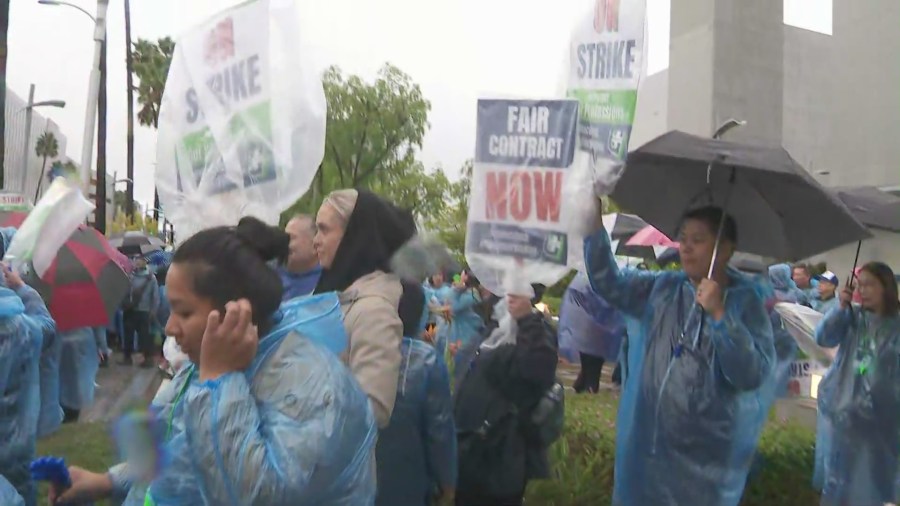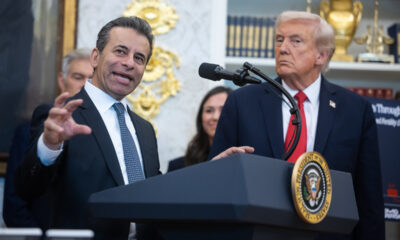Health
Kaiser Healthcare Workers End Strike, Union Claims New Momentum

A significant strike involving over 30,000 Kaiser Permanente healthcare workers concluded on October 14, 2025, with the union representing the employees declaring a sense of “new momentum” in ongoing negotiations. The walkout, which lasted five days, saw workers at more than 500 Kaiser facilities across the West Coast protesting against what they described as unsafe staffing levels, stagnant wages, and deteriorating patient care conditions.
The strike was initiated by members of the United Nurses Associations of California/Union of Health Care Professionals (UNAC/UHCP). Of the 46,000 union members involved, more than 31,000 were based in California, while others participated from Hawaii and Oregon. The striking workers included a variety of healthcare professionals, such as registered nurses, pharmacists, nurse anesthetists, and nurse practitioners.
In response to the strike, Kaiser officials labeled the walkout as “unnecessary and disruptive.” They claimed to have made a “strong, comprehensive offer” to the union prior to the strike. Nevertheless, the union rejected this offer, prompting the workers to return to their positions on Sunday, following the end of the strike.
Union Sees Opportunities in New Standards
According to a statement from UNAC/UHCP, the strike was a pivotal moment in the ongoing struggle for better working conditions. The union emphasized that “caregivers are united, determined and backed by a growing movement for safe staffing and fair contracts.” A critical factor in their renewed resolve was the introduction of new standards by the Joint Commission on medical facility staffing, released during the strike.
These standards are expected to significantly influence future contract negotiations. “The Joint Commission has finally said what nurses have known all along: unsafe staffing is unsafe care,” stated UNAC/UHCP President and registered nurse Charmaine S. Morales. She further elaborated that healthcare employers must regard staffing as a critical patient safety issue rather than a mere budgetary concern.
The union plans to resume negotiations with Kaiser officials on October 28 and October 29. Morales concluded, “This strike may be over, but the fight for patient safety is not. Caregivers are returning to work united, energized and ready to keep up the pressure for a fair contract that puts patients first.”
As the healthcare industry continues to grapple with staffing challenges, the outcome of these negotiations will be closely watched by both healthcare workers and patients alike. The recent developments have underscored the growing urgency for improved working conditions in the sector, highlighting a vital intersection between employee welfare and patient care.
-

 World5 days ago
World5 days agoExposing the Reality Behind Guatemala’s Garment Industry
-

 Politics5 days ago
Politics5 days agoLB Pharmaceuticals Quiet Period Ends October 21, Analysts Weigh In
-

 Business5 days ago
Business5 days agoRoyal Bank of Canada Upgrades Ovintiv to Outperform Rating
-

 Sports5 days ago
Sports5 days agoSaquon Barkley Reflects on James Franklin’s Dismissal from Penn State
-

 World5 days ago
World5 days agoHamas to Return Remains of Additional Hostage on Friday
-

 Health5 days ago
Health5 days agoFDA Announces First Nine Recipients of National Priority Vouchers
-

 Science5 days ago
Science5 days agoMIT Develops 3D Brain Models from Patient Cells for Custom Therapies
-

 Entertainment5 days ago
Entertainment5 days agoOlivia Nuzzi’s Memoir Set to Uncover RFK Jr.’s Controversial Texts
-

 Lifestyle3 days ago
Lifestyle3 days agoHistorian Seeks Help to Uncover Cherry Street’s Past
-

 Science3 days ago
Science3 days agoYale School of the Environment Launches Accelerated Master’s Programs
-

 Lifestyle5 days ago
Lifestyle5 days agoSouth Los Angeles Intersection Renamed to Honor Activist Danny Bakewell Sr.
-

 Entertainment5 days ago
Entertainment5 days agoSylvester Stallone’s ‘Alarum’ Surges in Streaming Despite Poor Reviews









